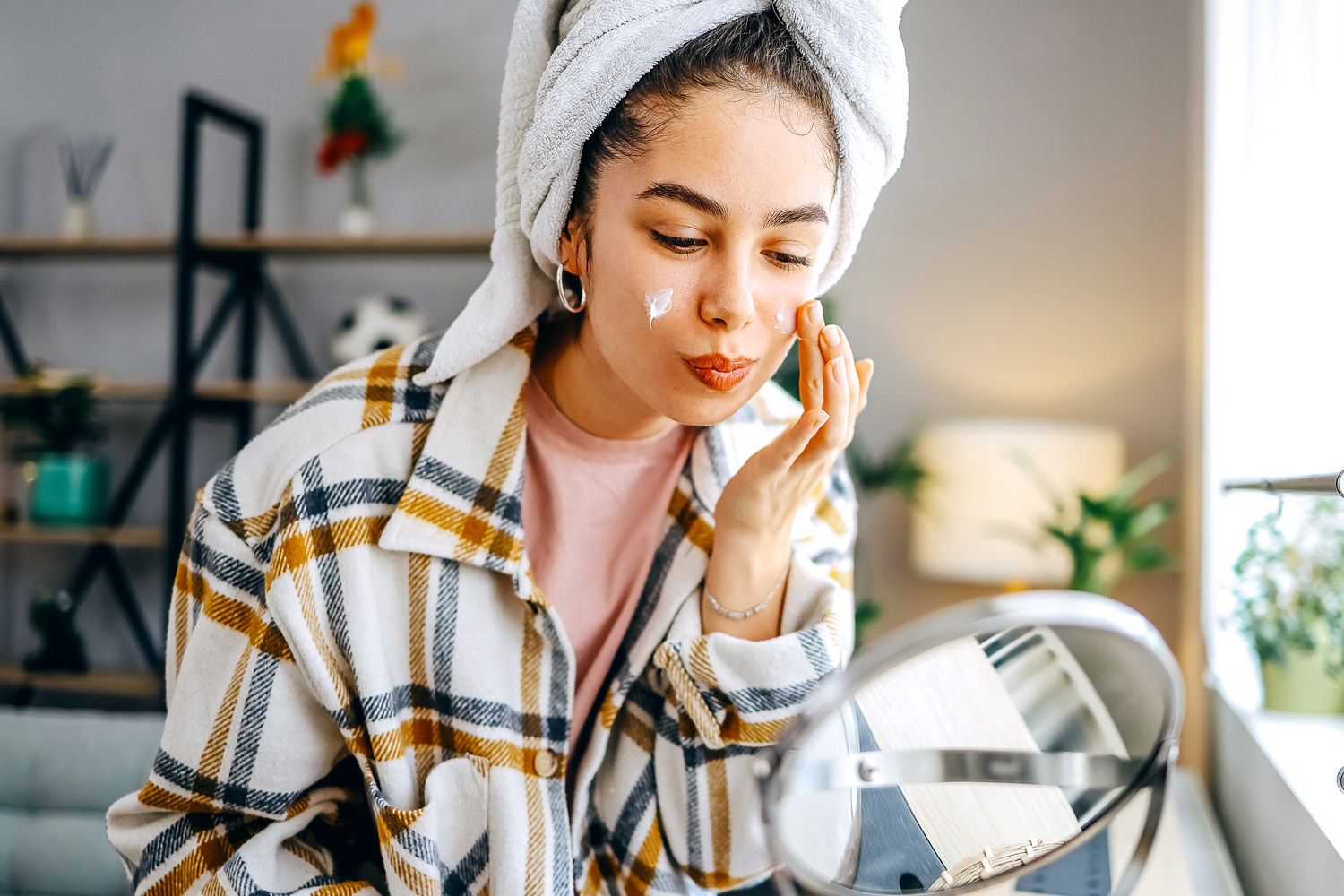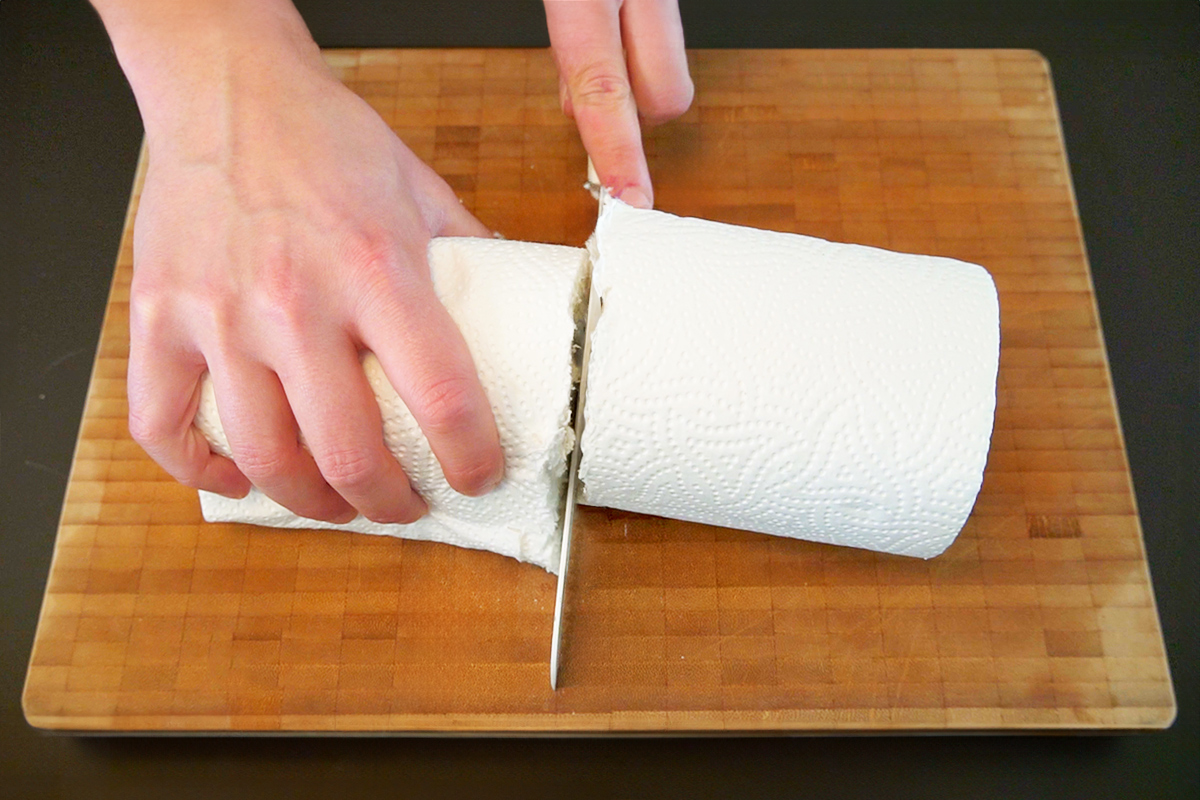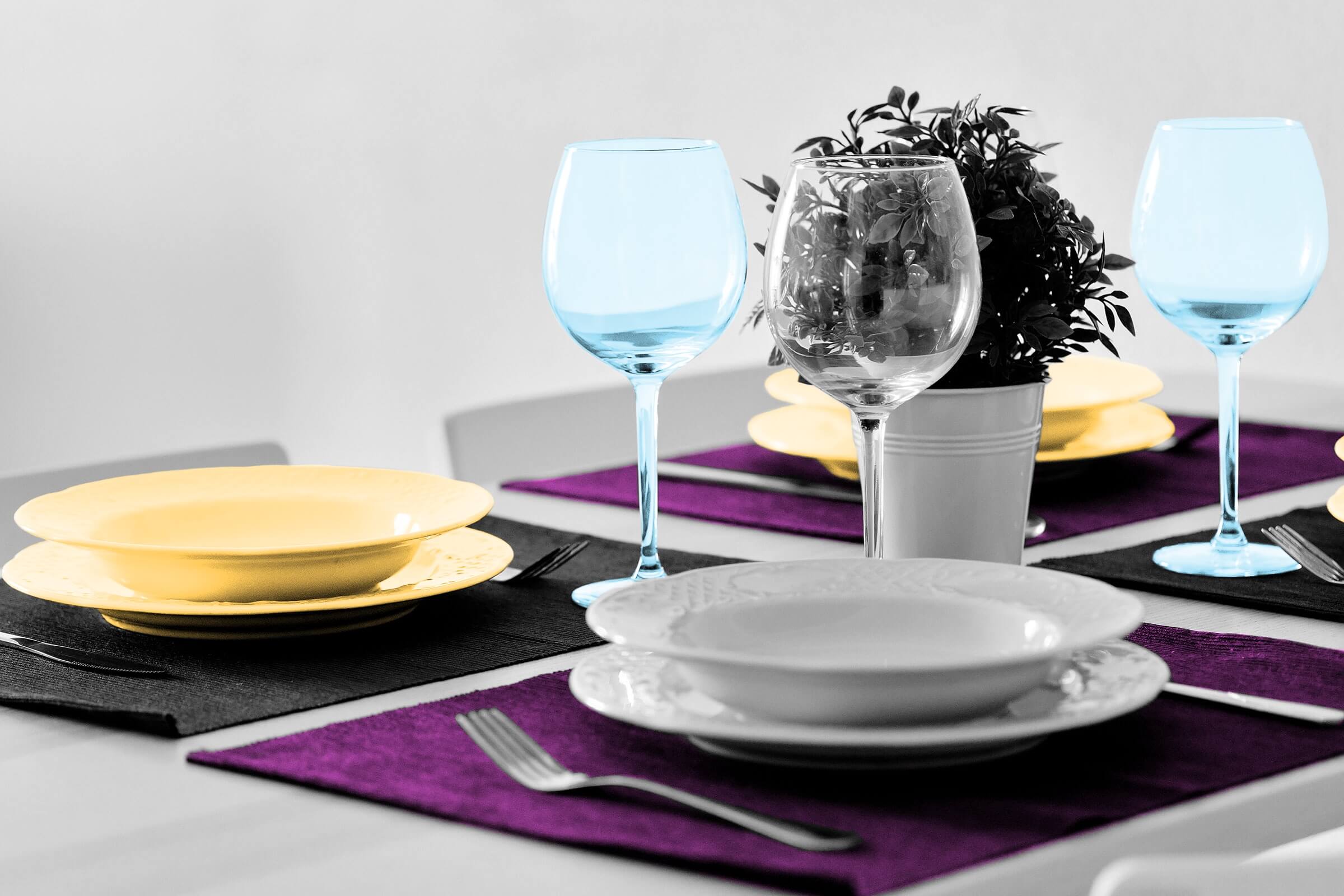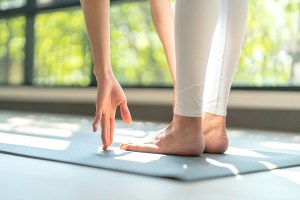We independently evaluate all recommended products and services. If you click on links we provide, we may receive compensation.
Understanding your skin type is the first step in crafting the perfect skin care routine. Whether you have oily, dry, combination, or sensitive skin, knowing your skin type will help you address your specific concerns and achieve a healthy, glowing complexion. It can also make your skin care work that much better — and considering all the hard-earned money you’re spending on the latest and greatest products, that’s no small thing.
We chatted with board-certified dermatologist Dr. Scott Walter, aka @denverskindoc on Instagram and TikTok, to get to the bottom of how to figure out your skin type in the easiest ways possible. Once you know your skin type, you can tailor your beauty regimen accordingly.

What Are the Different Skin Types?
Before you can determine your skin type, it’s important to understand the four primary categories: oily, dry, combination, and sensitive.
- Oily Skin: Characterized by an overproduction of sebum, oily skin often appears shiny and may be prone to acne and enlarged pores.
- Dry Skin: Lacking in natural oils, dry skin can feel tight, rough, and may have flaky patches.
- Combination Skin: A mix of oily and dry areas, combination skin typically has an oily T-zone (forehead, nose, and chin) with drier cheeks.
- Sensitive Skin: Easily irritated, sensitive skin may react to certain products or environmental factors, causing redness, itching, or burning.

How To Determine Your Skin Type
To accurately identify your skin type, follow these simple steps recommended by Dr. Walter.
1. Cleanse Your Face
Start by washing your face with a gentle cleanser and pat it dry. Skip any additional skin care products afterward.
2. Wait and Observe
Let your skin rest for about 25 to 30 minutes. During this time, avoid touching your face. “After waiting, you're going to closely observe your skin,” Dr. Walter says. “You can do so with your eyes and just feeling the skin [with your hands], but if you want to be accurate, get some blotting papers and blot your skin.”
3. Blotting Test
Go the extra mile by taking a piece of blotting paper and gently pressing it on different areas of your face, especially the T-zone and cheeks.
4. Analyze the Results
- If the blotting paper picks up a significant amount of oil from all areas, you likely have oily skin.
- If it picks up little to no oil and your skin feels tight, you probably have dry skin.
- If the blotting paper shows oil only from the T-zone, you have combination skin.
- If your skin feels irritated or reacts to the blotting paper, you may have sensitive skin.

Tailoring Your Skin Care Routine to Your Skin Type
Once you've determined your skin type, it’s time to choose products and create a routine that caters to your specific needs.
1. Oily Skin
- Use a foaming or gel cleanser to remove excess oil, such as La Roche-Posay Toleriane Purifying Foaming Facial Cleanser.
- Incorporate an oil-free moisturizer to keep your skin hydrated without adding extra oil and clogging pores. We love Shani Darden Weightless Oil-Free Moisturizer.
- If acne pops up, use products with salicylic acid or benzoyl peroxide, such as Murad Rapid Relief Acne Spot Treatment.
2. Dry Skin
- Opt for a creamy or hydrating cleanser that doesn’t strip your skin of its natural oils. We’re big fans of Bubble Soft Launch Hydrating Cream Cleanser.
- Apply a rich, emollient moisturizer to lock in hydration, like Dieux Instant Angel Lipid-Rich Barrier Repair Cream.
- Use gentle exfoliants to remove flaky skin and enhance absorption of moisturizing products. Renée Rouleau’s Triple Berry Smoothing Scrub exfoliates without stripping the skin.
3. Combination Skin
- Use a gentle cleanser that balances both oily and dry areas. Dr. Walter recommends sticking with an oily skin-friendly cleanser to be on the safe side. CeraVe Foaming Facial Cleanser is a combo-skin favorite.
- Apply a lightweight, hydrating moisturizer to the entire face, and use a richer cream on dry patches as needed. For example, apply Byoma Gel Cream Moisturizer all over and Prequel Skin Utility Balm on small areas where you need a hit of extra hydration.
- Consider using mattifying products for more oily areas, such as Danessa Myricks Beauty Yummy Skin Mattifying Water Powder Serum.
4. Sensitive Skin
- Choose fragrance-free and hypoallergenic products to minimize irritation. Vanicream Gentle Facial Cleanser is a dermatologist favorite for sensitive skin.
- Incorporate calming ingredients into moisturizers and serums, such as aloe vera, chamomile, and niacinamide to reduce redness and irritation. We love Tower 28 Beauty SOS Daily Skin Barrier Redness Recovery Moisturizer.
Understanding your skin type is the first step to achieving a more radiant complexion with fewer breakouts and less texture. You can enjoy healthy, balanced skin by following these steps and tailoring your skin care routine to your needs.
This article is for general informational purposes only.
Affiliate Disclaimer Medical Disclaimer
















 Unique Beauty is free for all users.
Unique Beauty is free for all users.